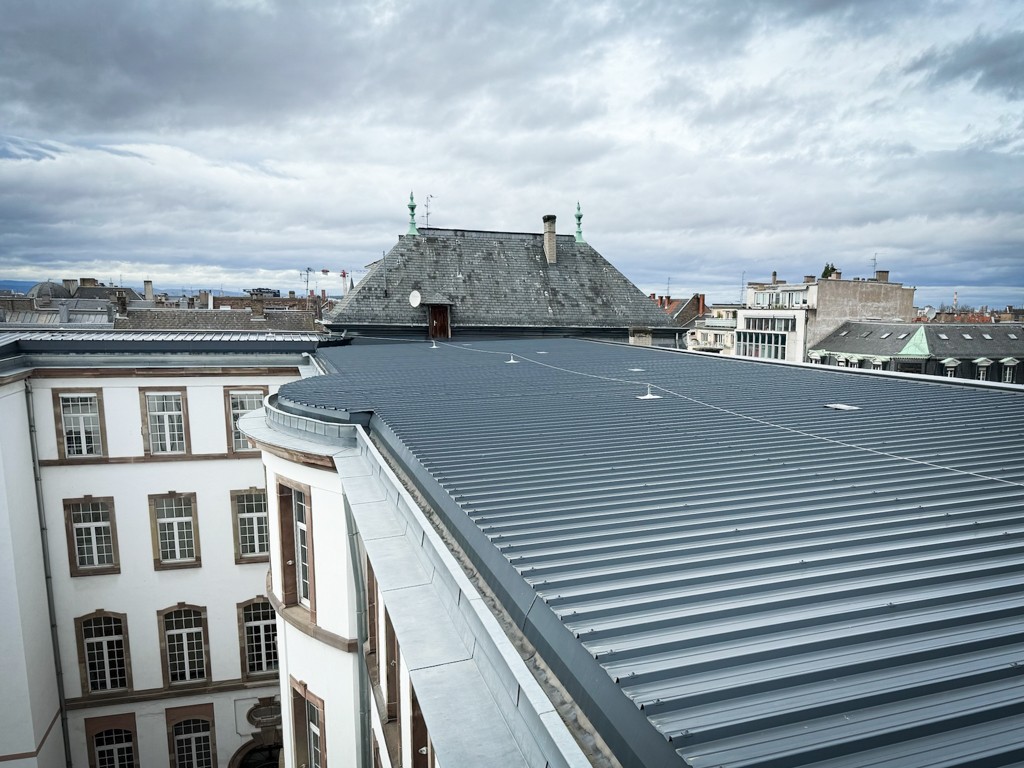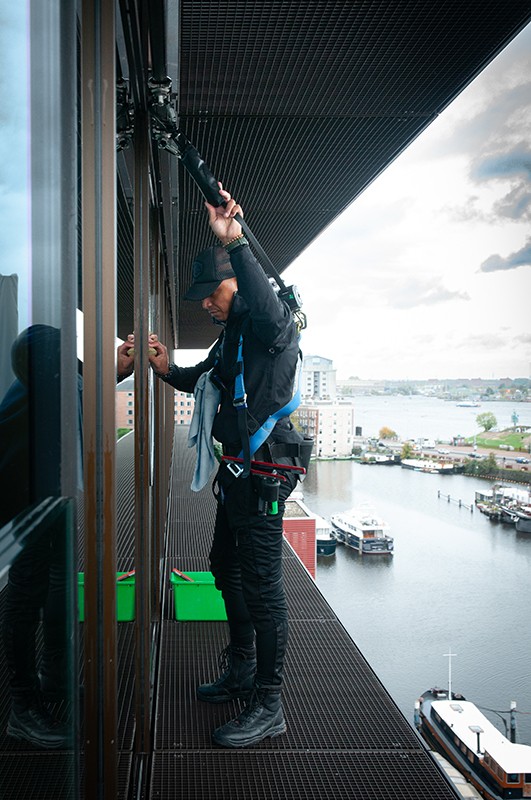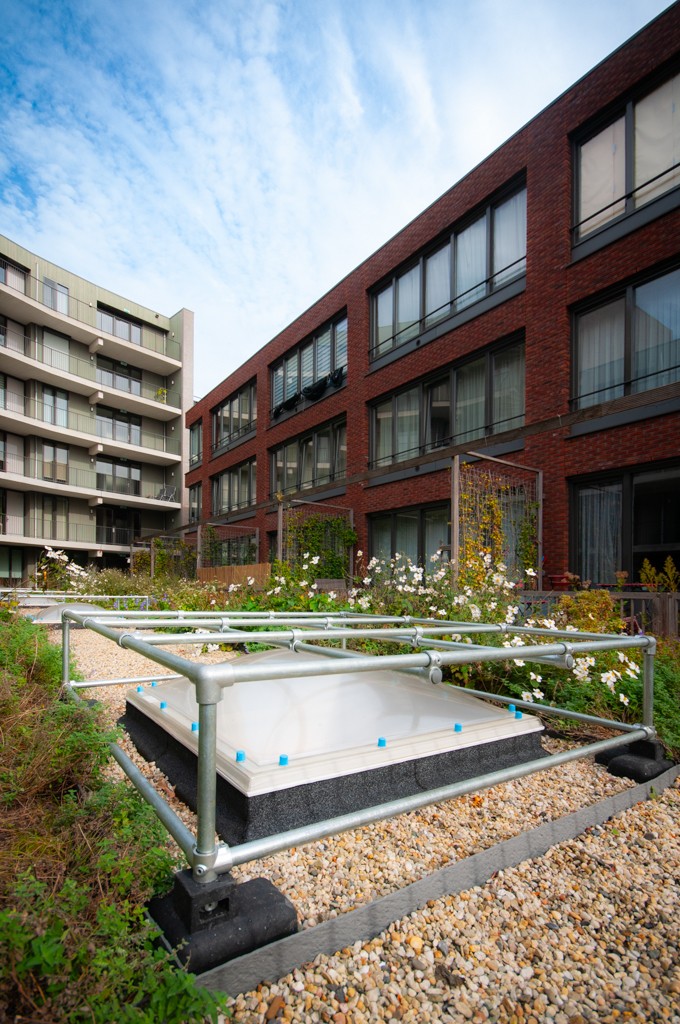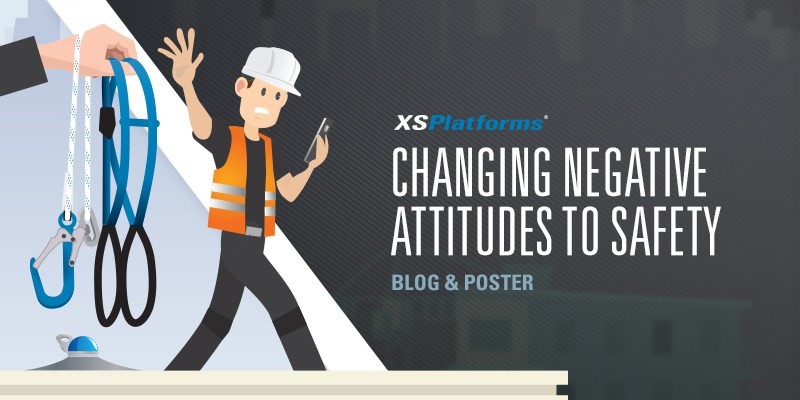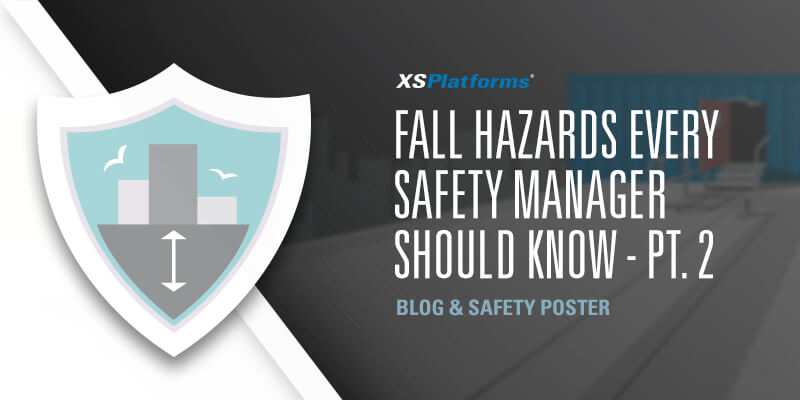SAFETY WITH A STAR

FALL PROTECTION HIERARCHY
THE GRADATION OF SAFETY AT HEIGHT
For work situations at height, the right solution depends on the desired risk reduction. Do you know what is on the roof? Then, with the help of the Star System for Fall Protection, you are able to get an idea of what you think you need.
In the Star System, the fall protection hierarchy is divided into a gradation of Safety Stars. The more stars the system has, the safer the solution and the greater the ease of use. The latter means that less knowledge is required for use.
In addition, there are additional systems that, in combination with the systems within the fall protection hierarchy, make a roof even safer. Think, for example, of demarcating or shielding skylights, self-closing access gates, and step platforms.
Below, we outline the Star System based on the XSPlatforms fall protection systems.
GUARDRAILS PLACED ALONG THE ROOF EDGE ★★★★★
Guardrails are at the top when it comes to safe working at height and require no user knowledge or training. The entire roof is transformed into a safe zone. By installing a guardrail, anyone can safely access the roof surface without needing personal protective equipment (PPE). XSPlatforms provides the most optimal safety in the form of steel guardrails: the Kee Guard.


RAILSYSTEM OR HORIZONTAL LIFELINE ALONG THE ROOF EDGE ★★★★
These so-called walk-along systems have the great advantage that you enjoy more freedom of movement. A series of anchor points are connected to each other with a steel cable or rail beam where the walker, also called slider or runner, is guided. The user is attached to this by means of the correct PPE. With this star type, the system is built along the roof edge. The distance between the rail or lifeline and the roof edge is almost equal everywhere.
This type of fall protection includes two systems, namely the XSRail and the XSLinked and LinkedPro lifeline systems.
XSRail system
Horizontal lifeline systems
HORIZONTAL LIFELINE + ANTI-PENDULUM ANCHOR POINTS ★★★
This combination is constructed from a centrally tensioned lifeline and anchors on the corners of the roof to prevent a pendulum effect. The result is a smaller safe zone, which requires more user knowledge and offers less freedom of movement.


SINGLE ANCHOR POINTS + ANTI-PENDULUM ANCHOR POINTS ★★
This combination consists of anchor points that are a maximum of 6 meters apart. Anti-pendulum anchor points are installed on the roof corners to prevent the pendulum effect. Freedom of movement is very limited and requires a high level of user knowledge. It is a time-consuming system because the attachment point must be moved each time. There is a considerable chance of human error. This star system even makes some zones inaccessible.
TEMPORARY LIFELINE + ANTI-PENDULUM ANCHOR POINTS ★
A combination of a temporary lifeline tensioned between two anchor points in the middle of the roof. Anti-pendulum anchor points are installed at the corners to prevent the pendulum effect. Similar to the 2-star system, there is limited freedom of movement, although with the temporary lifeline, it is more present. The user must have a higher level of knowledge to properly install and use the temporary lifeline.

